A Complete Guide to Setting Up Your iWatch

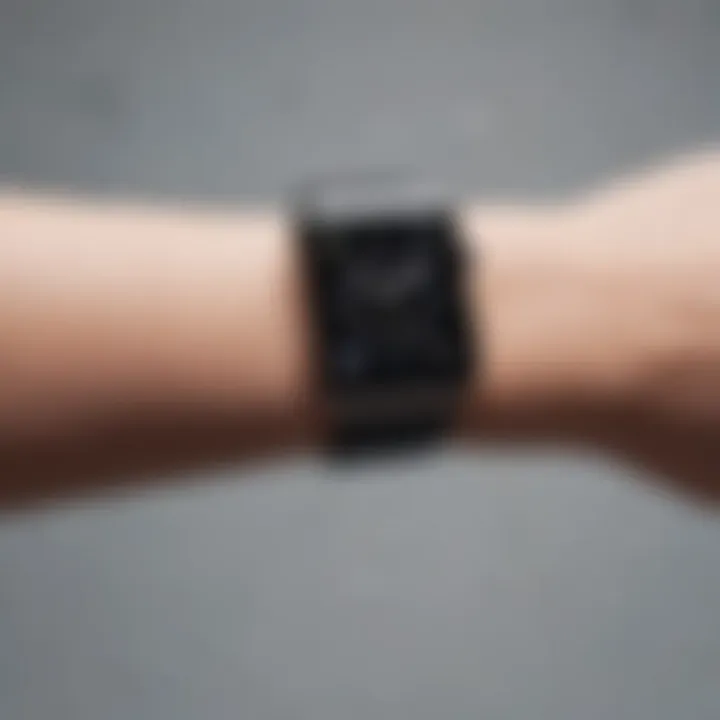
Intro
Setting up an iWatch involves more than just placing it on your wrist. It requires an understanding of both the device itself and how it interacts with other Apple products. This guide aims to provide you with an in-depth overview of the iWatch setup process, detailing the steps needed to fully integrate this device into your daily routine. Whether you are new to iWatch or upgrading from an older model, we will cover everything from initial setup to personalization options.
Product Overview
Prolusion to the Apple product being discussed
The iWatch, known officially as the Apple Watch, is a versatile smartwatch designed to enhance user experience with features that extend beyond timekeeping. It sports a sleek design, making it not just a functional device but also a fashion accessory. With its intuitive interface and vast capabilities, the iWatch is a sophisticated tool that serves various user needs.
Key features and specifications
- Health tracking: The iWatch integrates health applications such as heart rate monitoring, sleep analysis, and activity tracking.
- Notifications: Users receive calls, messages, and app alerts directly on their wrists.
- Customization: The watch offers multiple face designs and complications that allow for personalization.
- Connectivity: The iWatch pairs seamlessly with iPhones, enabling easy access to apps and services.
Design and aesthetics
The iWatch showcases a modern design, featuring a Retina display and customizable bands in various material options. Its aesthetic appeal is part of its market success, offering users a device that integrates easily into everyday wear.
Performance and User Experience
Performance benchmarks
User feedback highlights that the iWatch performs well under most conditions. The speed at which applications load is efficient, generally enhancing the user experience. Battery life is acceptable, offering about 18 hours on a single charge.
User interface and software capabilities
The watchOS is user-friendly, allowing for easy navigation through apps and settings. Users can expect a smooth experience as they toggle between health tracking features, notifications, and music controls. App developers also contribute by providing tools designed specifically for the watch, enhancing its overall functionality.
User experiences and feedback
Overall, users appreciate the convenience the iWatch provides. Many point out how it aids in fitness goals and necessary notifications, reducing the need to frequently check their phones. However, there are areas for improvement, particularly in battery longevity and app availability.
Comparison with Previous Models or Competitors
Advancements and improvements from previous models
Each new iteration of the iWatch has introduced features that improve performance and user experience. For example, the latest model incorporates blood oxygen monitoring, which was absent in previous versions. This reflects Apple’s commitment to advancing user health monitoring technologies.
Competitive analysis with other similar products
When comparing iWatch to similar devices, such as Samsung Galaxy Watch and Fitbit, it becomes clear that Apple's ecosystem offers unique advantages. The integration with other Apple products and services gives the iWatch a distinct edge in usability.
Value proposition
The iWatch stands out due to its combination of quality, style, and functionality, making it a desirable choice for consumers willing to invest in premium technology.
Tips and Tricks
How-to guides and tutorials for optimizing the Apple product's performance
To get the most out of your iWatch, consider the following:
- Regularly update watchOS to access new features and security improvements.
- Use the Health app on your iPhone to monitor progress on fitness goals.
- Explore the App Store to find productivity apps that can enhance daily usage.
Hidden features and functionalities
There are features that may go unnoticed, for example:
- Customizing notifications per app can help in prioritizing what is important.
- The Walkie-Talkie functionality offers a fun way to communicate with other iWatch users.
Troubleshooting common issues
If you encounter issues with the iWatch, simple steps can often resolve problems:
- Restart the device.
- Check for software updates.
- Reset network settings if connectivity issues persist.
Latest Updates and News
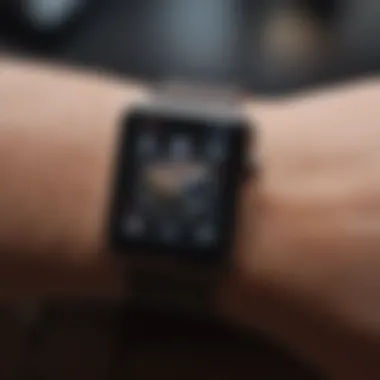
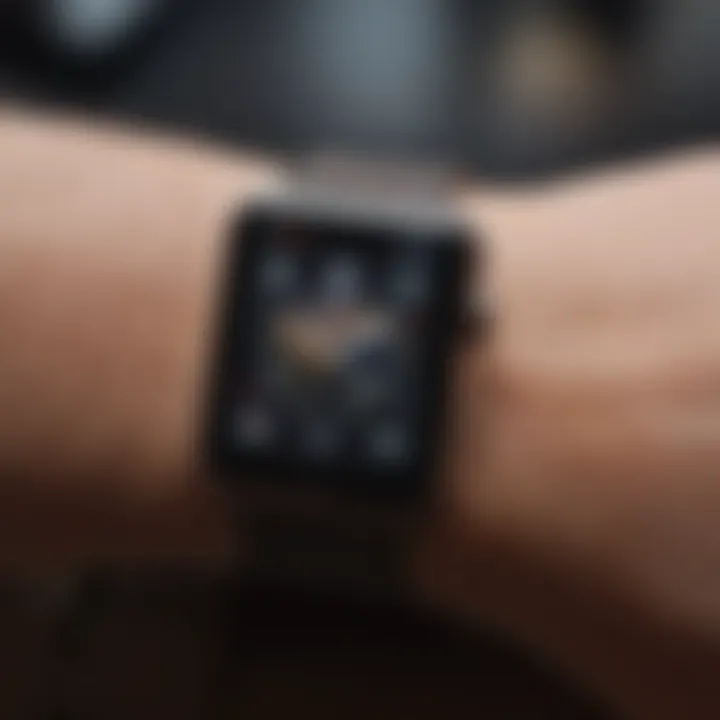
Recent developments in software updates and new features
Apple continuously enhances the iWatch line through software updates, with recent ones adding features such as improved workout tracking and new watch faces. Keeping your watch software updated is essential for maintaining functionality and access to the latest features.
Industry news and rumors surrounding upcoming products
The tech community remains abuzz with speculation about future iWatch models. Rumors suggest potential advancements like greater integration with health services and improvements in battery technology.
Events and announcements from Apple
Apple events often serve as a platform for unveiling new products or updates. Staying informed about these events can provide insights into the future of the iWatch and its role in the tech landscape.
Understanding iWatch
Understanding the iWatch is crucial for anyone looking to harness its full potential. This section will elucidate the significance of grasping both the hardware and software aspects of the device. It will also explore how understanding the iWatch can enhance user experience, maximize functionality, and mitigate common issues during the setup process.
The iWatch, now referred to as Apple Watch, represents a convergence of fashion and technology. Knowledge of its various models can assist users in selecting the right model that fits their needs.
Overview of iWatch Models
The Apple Watch has evolved since its inception, with several models released to cater to diverse preferences and requirements. The original version introduced fundamental fitness-tracking features, while newer iterations have expanded functionality significantly.
- Apple Watch Series 1: Launched in 2015, it was the initial step into the smartwatch market, featuring basic fitness tracking and notifications.
- Apple Watch Series 2: Released a year later, it introduced built-in GPS, water resistance, and improved brightness for outdoor visibility.
- Apple Watch Series 3: This model brought cellular capabilities, allowing users to make calls directly from the watch without needing a nearby iPhone.
- Apple Watch Series 4 and later: These later models enhanced health monitoring systems with features like ECG readings and fall detection.
Knowing each model’s specifications helps in maximizing features and also understanding what may be missing in the older versions.
Key Features and Functionalities
The capabilities of the iWatch go beyond simply telling time. The integration with iOS allows it to function seamlessly alongside an iPhone, thereby enhancing productivity and convenience.
Key features include:
- Fitness Tracking: With built-in sensors, it monitors heart rate, track workouts, and record activity levels.
- Health Monitoring: Features like the ECG app and blood oxygen monitoring provide insights into user health, granting a proactive approach to wellness.
- Notifications: Users can receive text messages, emails, and app notifications directly on their wrist, minimizing the need to check their phones frequently.
- Apple Pay Integration: Facilitates contactless payments directly from the watch, enhancing convenience while shopping.
- Customizable Watch Faces: Users can tailor the watch face to suit personal style and functionality needs.
Understanding these functionalities is essential to fully utilize the device's capabilities. It not only enriches the user's daily routine but also positions the iWatch as a valuable tool in everyday life.
Prerequisites for Setup
Before delving into the intricacies of setting up your iWatch, it is essential to understand the prerequisites for a smooth installation process. This section emphasizes the necessary elements that will maximize your experience and ensure your iWatch seamlessly integrates with your existing technology. Properly addressing these prerequisites can save users time and frustration, providing a solid foundation for effective usage.
Compatible Devices and Software
Having the right devices and software is crucial for setting up your iWatch. To begin with, the iWatch requires an iPhone that runs at least iOS 15 or newer. This compatibility enables all the essential features to function correctly. If your iPhone is too old, it may limit the performance of your watch, leading to mismatched functionalities.
Also, ensure that your iPhone has the latest version of the Apple Watch app installed. Without the latest updates, users may experience connectivity problems or limited access to new features. Moreover, verify that Bluetooth is enabled on your iPhone, as this allows for the critical initial pairing process between the iPhone and the iWatch.
Benefits of ensuring compatibility include:
- Seamless connectivity during initial pairing.
- Access to the latest features of both devices.
- Improved overall performance and user experience.
Initial Device Requirements
The setup requires more than just compatible devices. You need to ensure that both the iWatch and the iPhone are charged adequately before starting the pairing process. A battery level above 50% is recommended for both devices. This helps prevent unexpected shutdowns during the setup process, which could result in the loss of critical data or settings.
Additionally, make sure that your iPhone is connected to a stable Wi-Fi network. A reliable internet connection is needed for software updates and app downloads, which are integral to setting up your iWatch. Without this connection, certain features may not be fully accessible right from the start.
"A proactive approach to these initial requirements can enhance setup efficiency and minimize tech-related disruptions."
iWatch Setup Process
The iWatch setup process is not merely a technical procedure; it is the gateway to a seamless integration of your Apple device ecosystem. This section details the vital steps to ensure your iWatch operates smoothly with your iPhone and enhances your daily activities. Emphasizing the significance of this process sets the foundation for an enriched experience, enabling users to access notifications, apps, and health tracking features more efficiently.
Pairing with Your iPhone
Pairing your iWatch with an iPhone is essential. This allows the devices to communicate effectively. It enables syncing of messages, calls, and other notifications between the two. To start this process, ensure your iPhone is running the latest version of iOS and that Bluetooth is enabled.
- Open the Apple Watch app on your iPhone.
- Tap "Start Pairing" on both devices.
- Hold your iPhone over the animation that appears on your iWatch to complete the pairing.
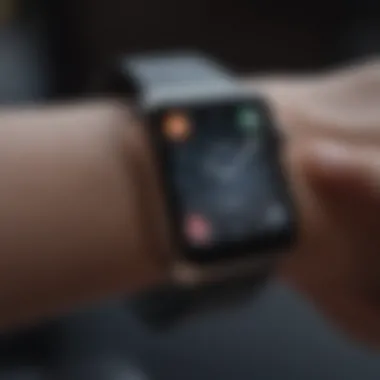
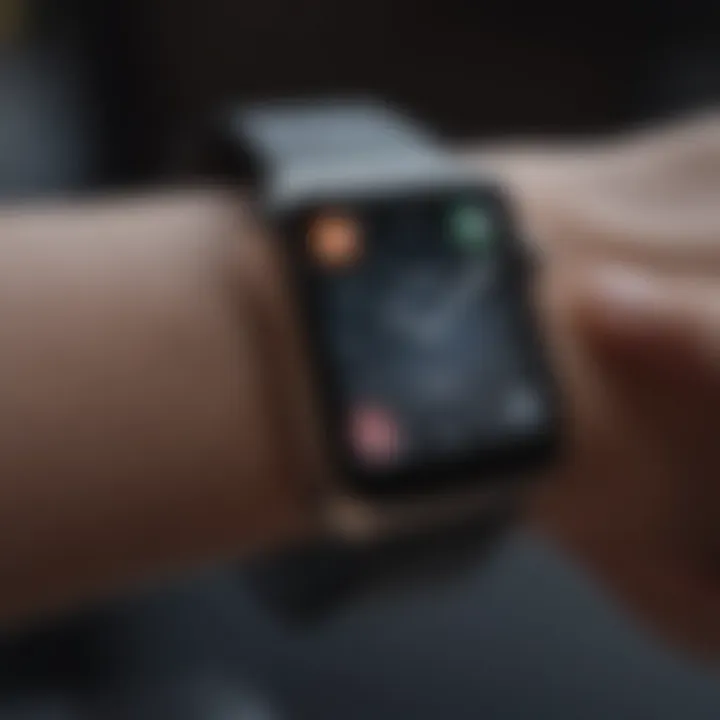
It is important to be within a short distance of your iPhone during this step to avoid connectivity issues. Additionally, confirm that both devices are charged sufficiently to prevent interruptions.
Choosing the Right Settings
Once pairing is successful, you will proceed to choose your desired settings. The initial setup wizard will guide you through different options that optimize your usage. Skimming through these settings can lead to a personalized iWatch experience that aligns with your daily habits.
- Select your preferred language.
- Choose how you want to receive notifications (audible alerts or silent alerts).
- Enable Siri if desired, which can assist in hands-free operations.
Understanding these settings contributes to a tailored experience. Customizing notification settings, for example, allows you to manage distractions effectively while still remaining connected to what matters most.
Setting Up Health and Fitness Features
Setting up health and fitness features on your iWatch is a fundamental step for enhancing its functionality. This device serves as a powerful wellness tracker, offering insights into your physical activity and health metrics.
To effectively set these features:
- Open the Apple Health app on your iPhone.
- Set your health information, including age, weight, height, and medical conditions. This data is essential for accurate readings.
- Activate fitness tracking, enabling the iWatch to monitor your workouts
Incorporating these health settings allows your iWatch to track metrics like heart rate and exercise minutes, giving you a comprehensive overview of your health journey. Utilizing these features can motivate you to achieve personal fitness goals efficiently.
"The iWatch is not just a timepiece, but a companion in managing your cultural and fitness aspirations."
By following these outlined steps, the iWatch setup process can transform an otherwise mundane task into a meaningful experience that holds potential for improved daily interactions.
Personalization Options
Personalization options play a crucial role in enhancing the user experience with the iWatch. The ability to customize not only allows users to express their individuality but also to tailor functionality to their specific needs. When users are satisfied with how their iWatch looks and operates, it leads to better engagement and a more fulfilling experience overall. The personalization aspects discussed here include watch faces, alerts, and third-party applications, each adding a layer of usability and aesthetic preference.
Customizing Watch Faces
Customizing watch faces on the iWatch offers a significant degree of personalization. Users can choose from a range of options including classic digital displays, elegant analog styles, or information-rich designs that highlight specific functionalities. This choice allows you to transform your watch into a reflection of personal taste and daily needs.
The customization is straightforward. You can access various watch faces by pressing firmly on the watch screen. This will present a selection of available faces. After choosing a face, tap "Customize" to modify details like colors, complications, and layout. You might opt for a face that provides quick access to fitness data or a minimalistic design that aligns with professional attire. Adjusting these features enhances usability. Moreover, different watch faces might be suitable for different occasions, so switching between them can keep things fresh.
Setting Alerts and Notifications
Setting alerts and notifications on the iWatch is vital for managing daily activities while staying connected without constant distraction. You can customize how and when alerts come through by adjusting settings within the Watch app on your iPhone.
To do this, navigate to "Notifications" in the Watch app. Here, you can decide which notifications appear on your iWatch. Whether it's messages, emails, or app-specific alerts, prioritizing certain notifications helps streamline your workflow. For instance, allowing only urgent notifications can reduce distractions during meetings or while focused on other tasks. Additionally, each app can have its own notification style, allowing you to choose between haptic feedback, sounds, or silent alerts, depending on your preference.
Adding Third-Party Apps
The ability to add third-party apps further amplifies the iWatch’s functionality. The App Store offers numerous applications tailored for fitness, productivity, and more, providing options that extend beyond the standard capabilities of the device.
To add apps, open the Watch app on your iPhone and tap on "App Store." Here, you can browse popular third-party applications like Strava, Spotify, or Citymapper. Installation is generally seamless; once you pick an app, simply tap "Get" and it will sync with your iWatch. The added features can significantly improve functionality. For example, fitness enthusiasts can track workouts more accurately, while music lovers can enjoy playback controls directly from their wrist.
Advanced Features and Their Configurations
Understanding the advanced features of your iWatch is essential to fully leveraging its potential. These functionalities not only enhance convenience but also improve everyday productivity. Each advanced feature is designed to complement various aspects of daily life, whether through financial transactions, voice-activated assistance, or staying connected with others. By configuring these features, users can personalize their device experience, making it more relevant to their unique needs.
Using Apple Pay
Apple Pay is a powerful feature that offers a contactless payment solution right from your wrist. This functionality allows users to make secure payments in-store and online without needing to reach for their phone or wallet.
To set up Apple Pay on your iWatch, follow these steps:
- Open the Watch app on your iPhone.
- Tap on My Watch, and then select Wallet & Apple Pay.
- Follow the on-screen instructions to add a new debit or credit card.
Once set up, using Apple Pay is straightforward. Simply double-click the side button on your iWatch, and hold it near the contactless reader. This method streamlines transactions and ensures that your data is encrypted, protecting your sensitive information. Remember to verify that your bank supports Apple Pay.
Enabling Siri on iWatch
Siri on your iWatch can significantly enhance user experience by providing quick answers and assistance with various tasks. You can enable Siri by going into the Settings app on your iWatch. Select Siri, then choose your preferred activation method, either by raising your wrist or using the Digital Crown.
Once enabled, you can ask Siri to send messages, set reminders, and even control other connected devices. This capability fosters a more efficient interaction model and reduces the need to manually navigate through apps. For example, you could say, "Hey Siri, set a timer for 10 minutes," and Siri will take care of it.
Exploring Communication Features


The communication capabilities of the iWatch serve as a bridge to keep users connected. With features like messaging, call handling, and even email notifications, the iWatch ensures you never miss important information.
To utilize these features, ensure that your iWatch is paired with your iPhone. Here are a few key communication aspects:
- Text Messaging: Send and receive messages directly on your iWatch. Notifications will appear discreetly, allowing for quick replies.
- Calls: You can answer calls with ease. The iWatch acts as a speakerphone, making it convenient when your hands are occupied.
- Email Alerts: Stay updated on important emails by enabling notifications. You can set preferences for which emails to receive on your wrist.
By exploring and configuring these advanced features, users can truly optimize their iWatch experience. They integrate seamlessly into your daily routine, enhancing connectivity and reducing device dependence.
Common Setup Issues
Addressing the common setup issues is crucial for anyone looking to successfully integrate their iWatch into their daily routine. Users often encounter hurdles that can be frustrating and impede the overall experience. Understanding these issues offers a pathway to smoother functionality and maximum usability.
By familiarizing oneself with potential problems like pairing difficulties and software update failures, users can proactively tackle these hurdles rather than spending unnecessary time in confusion. Tackling setup issues not only enhances user satisfaction but also deepens the engagement with the device’s capabilities.
Troubleshooting Pairing Problems
Pairing the iWatch with an iPhone is a fundamental step in setting up the device. However, it is not uncommon for users to face difficulties during this process.
First, ensure both devices have wireless connectivity. Bluetooth should be enabled on the iPhone. If you still have problems, restarting both devices can work wonders. Sometimes, simply toggling the Bluetooth setting off and on again can help.
Here are some specific steps:
- On your iPhone, go to Settings > Bluetooth and ensure it is turned on.
- On the iWatch, press and hold the side button until the Apple logo appears.
- Wait for the pairing screen to show up on your iWatch.
- On the iPhone, tap the name of your iWatch to pair.
If problems persist, it could be due to software incompatibility. Making sure both devices are running the latest software is essential. Check for any pending updates on your iPhone and iWatch. Updating both can clear up numerous software-related issues.
Resolving Software Update Errors
Regular software updates are imperative to ensure optimal performance of the iWatch. Issues may arise during the update process, such as stalled downloads or incomplete installations. If users encounter a software update error, here are practical steps to resolve it.
- Check Compatibility: Ensure that your iPhone is running a compatible version of iOS with the iWatch.
- Connect to Wi-Fi: A strong Wi-Fi connection is critical for successful software updates.
- Free Up Space: If storage is low on the iPhone, it may hinder the update process. Consider deleting unused apps or files.
- Restart Devices: Restart both the iWatch and iPhone to clear temporary glitches.
- Manual Update: If the update fails again, you may try to update it through the Watch app on your iPhone. Navigate to My Watch > General > Software Update.
By following the aforementioned steps, users can effectively troubleshoot pairing problems and resolve software update errors, ensuring a seamless experience with their iWatch. Remember that proactive measures often go a long way in optimizing functionality.
Maintaining Your iWatch
Maintaining your iWatch is crucial for optimizing its performance and longevity. Proper upkeep ensures that the device remains functional and can support the latest features and apps. Regular maintenance can also prevent common issues, like battery drainage and software glitches. In this section, we will explore two essential areas of maintenance: regular software updates and battery maintenance tips.
Regular Software Updates
Software updates are fundamental to the efficient operation of your iWatch. Apple continuously releases updates that include bug fixes, new features, and security enhancements. Keeping your watch software current is important for several reasons:
- Security Enhancements: Regular updates help protect your device from security threats. They address vulnerabilities that could be exploited by malicious software.
- Feature Improvements: New updates often introduce features that enhance user experience. You may discover new health metrics or additional watch face options.
- Bug Fixes: Updates frequently resolve existing bugs, improving the overall stability of your device.
To ensure your iWatch is up to date, check for updates regularly. You can do this by going to the Watch app on your paired iPhone. Select General, then Software Update. If an update is available, follow the on-screen instructions to complete the installation.
Important: Always ensure your watch is charged before starting any software update to avoid interruption.
Battery Maintenance Tips
The battery is a key component of your iWatch, and proper care can extend its lifespan. Here are some practices to help maintain battery health:
- Avoid Extreme Temperatures: Keep your iWatch away from very cold or hot locations. Extreme temperatures can cause permanent battery damage.
- Use Power Saving Modes: When not needed, consider activating low power mode. This can help conserve battery life when the watch is in less active use.
- Limit Background Activity: Some apps run in the background and can drain battery. Review the app settings within the Watch app to limit unnecessary background activity.
- Regularly Charge the Device: It’s better to keep your iWatch charged between 20% and 80%. Frequent full discharges followed by 100% charges can degrade battery performance over time.
Following these battery maintenance tips can help you enjoy your iWatch for many years. Pay attention to how you use and charge your watch, as this can significantly impact its overall health.
Closure
In the realm of modern technology, the integration of iWatch as a personal assistant is pivotal. This article highlighted key aspects of iWatch setup, ensuring users have a clear path to harnessing its full potential. Understanding the setup process is essential, as it directly influences user satisfaction and the longevity of the device.
Recap of Key Tips
To maximize the iWatch experience, consider the following important tips:
- Always update software regularly to benefit from new features and security patches.
- Ensure compatibility with your iPhone model to avoid pairing issues.
- Customize watch faces and alerts to suit your personal style and preferences.
- Familiarize yourself with advanced functionalities, such as Apple Pay and Siri, to enhance daily productivity.
- Perform troubleshooting for common issues by consulting the iWatch support resources when needed.
These tips illustrate a well-rounded approach to the effective use of iWatch. By following them, users can navigate challenges more easily and enrich their overall experience.
The Future of iWatch Technology
The future of iWatch technology appears promising. Innovations in health monitoring features, such as more accurate heart rate detectors and advanced integration with fitness apps, are on the horizon. Furthermore, there is a growing trend towards enhancing privacy features, ensuring user data remains secure.
The continual evolution of battery technology will allow for longer usage times without frequent charging, addressing one of the common concerns among users. The expansion of customization options in iWatch faces and more sophisticated app development are trends that will make iWatch even more appealing to a broader audience, including tech enthusiasts and professionals.



